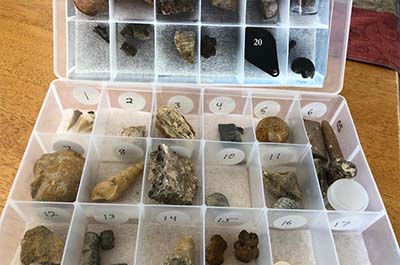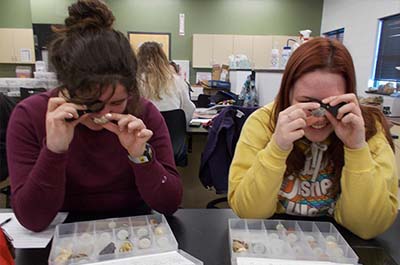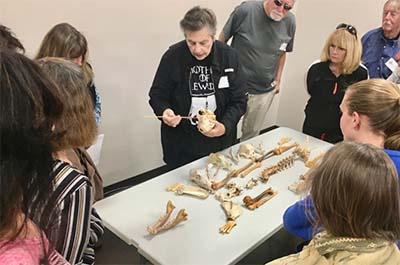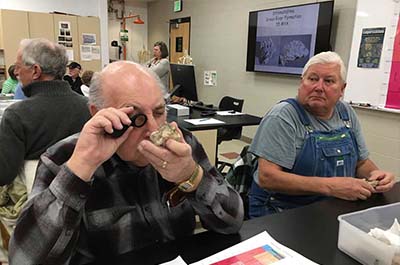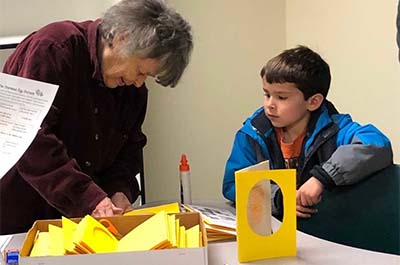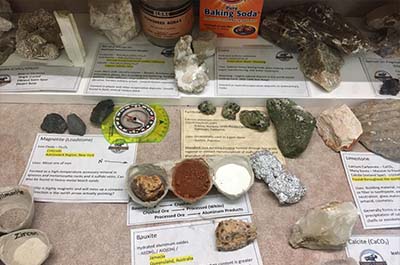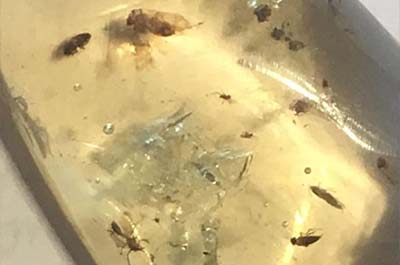The Close Relationship Between Man & Dog
A Relationship Began Thousands of Years Ago
By Cindy Smith
Dr. Sue Ware returned to the Royal Gorge Dinosaur Experience for the second time, to the delight of 27 community members. She presented a program entitled “From your Campfire to your Bed: The Evolution, Importance & Relationship between Dogs and Humans”.
Sue’s class covered these topics:
- the migration and evolution of dogs
- myths and legends involving wolves and dogs
- famous and infamous dogs
- duties dogs perform
She explained:
- the link between wolves and dogs
- how wolf pathologies affect wolf communication
- the effects of dog domestication and engineering
- evolutionary trends
- the form and function of body types and tooth dentition
- effects of the reintroduction of wolves on the Yellowstone environment
- extensive myths and legends surrounding dogs and wolves engrained in various cultures
- the millennia-old relationship and mutual benefits shared between early man/humans of today and wolves/dogs
Members of the community, including several from Pueblo and Denver, joined Sue’s class.
Sue discussed Canis familiaris, our modern dog, and Canis lupis, the wolf, detailing the similarities and differences, and the roles each play in their environment. Both the environment and other animals at Yellowstone benefited from the reintroduction of wolves.
Sue showed photos of prehistoric rock art illustrating hunters using dogs to bring down animals, and of a woman buried with a puppy 12,000 years ago in Israel. There are 26,000 year old human child footprints accompanied by a large canid (wolf or dog).
Sue brought a wolf skeleton to enhance our understanding of the form and function of bones.
Stones ’n Bones presented Sue with her own Doggie mug.
Sue described a wolf skull, including muscle attachment areas, dentition, and overall diagnostic features.
Astronomy gives us Sirius (the Dog Star, Canis Major), which follows Orion the Hunter. Alaska is fond of Balto, a legendary mixed breed dog who led a team through the blizzard of 1925 to Nome with diphtheria medication which saved many lives. Egypt has Anubis, Rome had Romulus & Remus, These are only a few of the ‘good’ legends.
But for many, the most memorable of Sue’s program were the war dogs, dogs who performed invaluable duties for our service men and woman, and were often left behind when their masters left. Stubby, a stray, was the most decorated war dog from World War I. Many rescue dogs working at the collapse of the World Trade Towers in 2001 became stressed because they had been trained to locate living people but there were none to be found. They sensed they were failures, so handlers ‘planted’ live people to appease the dogs’ needs.
Sue brought a wolf skeleton for the class to study. We learned of the carnassial teeth (upper premolar 4 and lower molar 1) and saw the ravages of arthritis in the spine. She displayed dog skulls for comparison with the wolf skull.
One of the myriad of fascinating facts I learned was: a dog’s nose print is like a human’s finger print.
Dr. Ware is a Forensic Pathologist, Forensic Anthropologist, and a Paleontology Pathologist. She is a Research Associate at both the Denver Museum of Nature & Science and the George C. Page Museum of La Brea Discoveries in Los Angeles, CA. She contributes to the Wolf Recovery Program in Yellowstone National Park where she is the principal investigator on a ten year research project conducting the medical examinations and analyses of Yellowstone wolf remains. She contributes to National Geographic and the Discovery Channel programs on Pleistocene predators.
Sue brought several domestic dog skulls (in the background) for comparative anatomy.
More Articles from “Stones ‘n’ Bones Activities”
Fossil Boot Camp – Covid Style
Stones ‘n Bones of Fremont County traditionally presents two or three Fossil Boot Camp classes each year for school age students and adults. With COVID, that has proven a little difficult
Fossil Boot Camp for PCC Historical Geology Students
Fremont Stones ‘n Bones introduced 16 Pueblo Community College students to fossils in Steve Wolfe’s Historical Geology class.
Stones ‘n’ Bones With Villa Bella School’s 2nd Graders
“What do paleontologists do?” is the question we were asked to help answer for 50 second graders at Pueblo, Colorado’s newest elementary school on January 16, 2020.
The Close Relationship Between Man & Dog
Dr. Sue Ware returned to the Royal Gorge Dinosaur Experience for the second time, to the delight of 27 community members. She presented a program entitled “From your Campfire to your Bed: The Evolution, Importance & Relationship between Dogs and Humans”.
Fossil Boot Camp at PCC Mini-College
For the 5th straight year, Stones ‘n Bones presented Fossil Boot Camp to 31 senior citizens in the Fremont County community.
Stones ‘n’ Bones & the Enormous Egg
What happens when an entire elementary school reads the same book, The Enormous Egg, and asks Fremont County Stones and Bones to come in to help with the family night to celebrate the reading? A two-hour evening full of paleontology learning!
Introducing Geology Students to Fossils
How does Steve Wolfe, Historical Geology instructor at PCC-Fremont Campus, prepare his students for field season observations? One way is by introducing them to fossils
Identifying Trilobites
The Pioche Formation of eastern Nevada is world famous for its amazing preservation of trilobites. Very old trilobites, from the Lower Cambrian (542 – 521 million years old), almost the oldest on record.
Everything Begins With Mining
There are many ways to appreciate rocks. Many of us notice them simply for their color, texture and shape, irresistible and raw in nature.
Insects Trapped in Amber
Many of us are familiar with the high preservation of insects and leaves in the Green River Formation, a Colorado lagerstätte well known for field trips yielding magnificent fossils.

